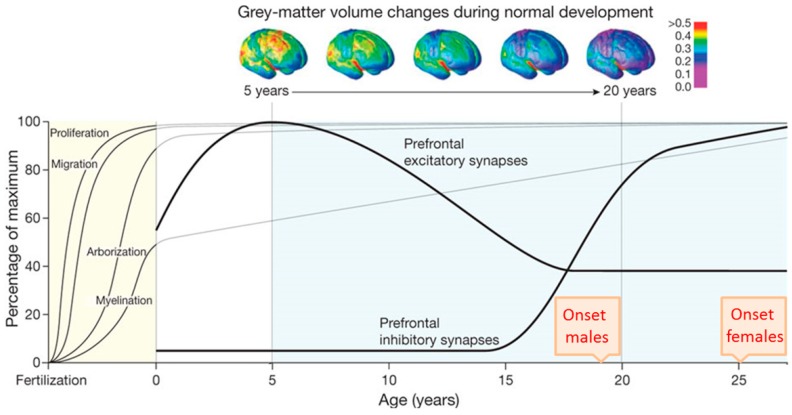Figure 2.
Temporal course of selected neurodevelopmental processes. The x axis depicts time from fertilization to young adulthood and the y axis shows the relative percentage of the maximum. The average age of schizophrenia (SCZ) onset in males and females in late adolescence and early adulthood, respectively, is indicated. Neurogenesis and subsequent migration of neurons to the cortex begin within a few weeks of gestation in humans and is completed around birth. Dendritic arborization and myelination continue postnatally towards adolescence and beyond. The progressive reduction of grey-mater volume detected with longitudinal neuroimaging (top) is thought to result from the combined effect of pruning of the neural arbor and myelin deposition. The formation of prefrontal excitatory synapses reaches a maximum in childhood at five years and declines thereafter until adolescence. By contrast, the formation of prefrontal inhibitory synapses strongly increases from 15 years onward through adolescence and levels off in early adulthood. Deregulation of the cortical excitatory-inhibitory balance is hypothesized to contribute to the development and manifestation of SCZ. Adapted from Thomas R. Insel, Rethinking Schizophrenia, published by Nature, 2010.

